Baby emus are the most adorable-looking little creatures in the Australian wild. Emus are the only remnant of the genus Dromaius that still survives to date.
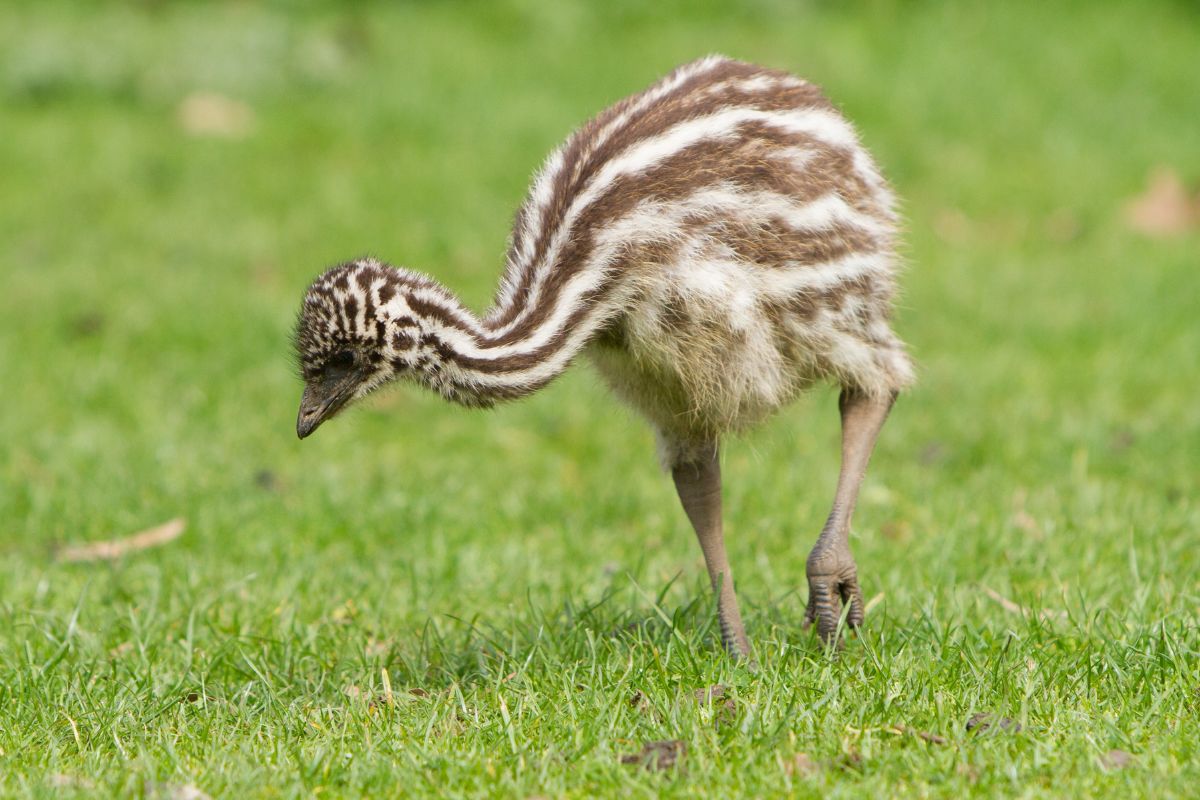
Are you curious about baby emus? So much information is available about full-grown emus, but little is known about emu chicks. This article delves deep and tells you interesting facts you should know about baby emu, complete with pictures.
Contents
Is There a Specific Name for Emu Chicks?
A baby emu or emu chick is what you call that little bird that emerges from an emu egg. Once they are a few days old, they can also be called nestlings. Baby emus and adult emus remain flightless throughout their life.
What Does an Emu Chick Looks Like?
An emu chick has a cream-white underlayer with black stripes that run from the head to the tail. The head and neck area of the chick is spotted all over. The distinctive color helps baby emus camouflage in the wild to avoid spotting and falling prey to other animals.
When the chicks are three months, the stripes start to disappear, and their whole body gradually gets covered with a seemingly unkempt gray-brown plumage. Their Fluffy face becomes less hairy as the chicks grow older. Once they reach adulthood, the head and neck area has such little hair that you can see their bluish skin underneath.
A baby emu reaches adulthood when they are 12 to 15 months old. Emus have an average lifespan of ten to 12 years.
Does a Male baby Emu Look Different From a Female?
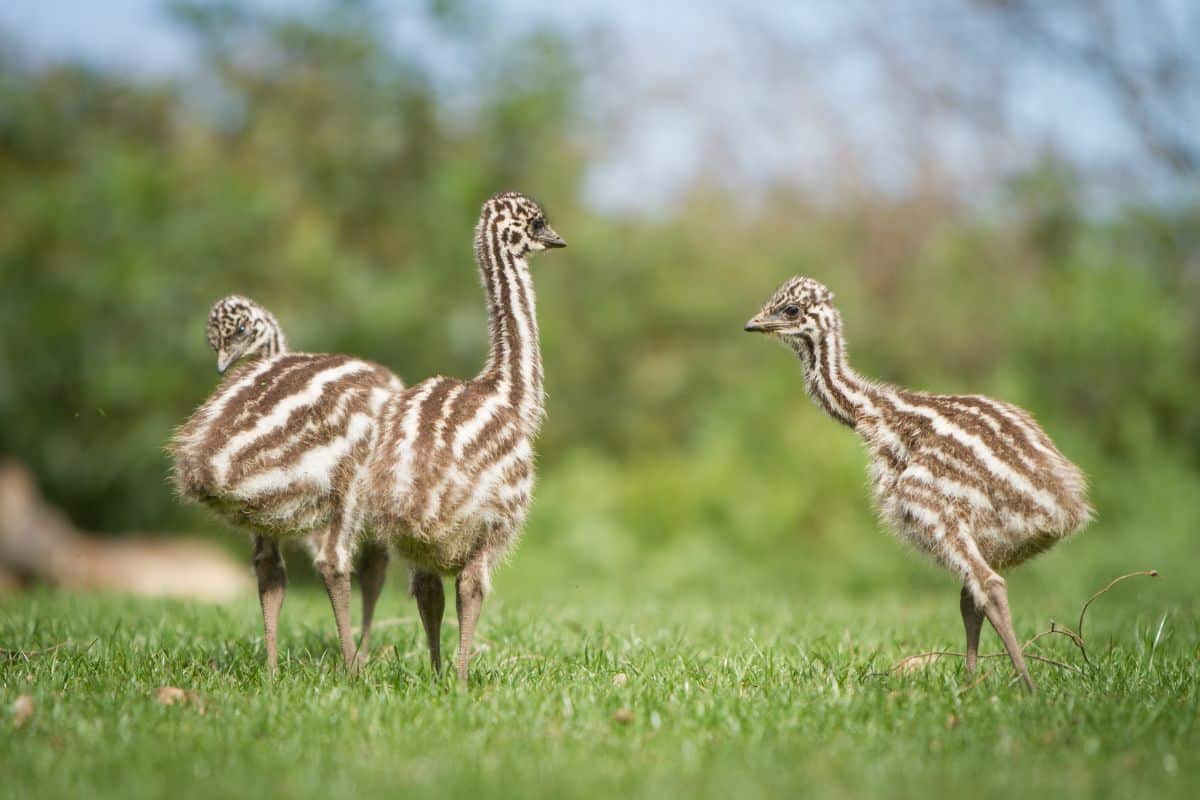
As chicks, all emus look the same. However, when they reach about six months, each gender starts exhibiting specific behavior and developing distinct features that make it easy to tell the gender of an emu chick.
Adult emus pretty much look the same. But if you look carefully, female emus are slightly larger than males.
What is the Average Size of a Baby Emu?
Baby emus may be tiny when they hatch but can grow to stand up to 1.9 m tall and weigh upwards of 50 kg. However, an emu chick only seems small compared to their adult version. But when compared to other chicks from other species, a baby emu is quite large.
Immediately a baby emu hatches; they measure about 12 cm tall and weigh about 0.5 to 0.9 kg. They grow super fast and feed a lot. When they are 12 months old, they have a little way to go before gaining maximum height and weight.
Which of the Two Parents Raises Baby Emus?
It’s normal for an adult female emu to mate with several males per breeding season. When she is done laying her eggs, the male emu ironically takes over to build a nest, incubate the eggs, and raise the chicks.
Baby emus stay close to and are entirely dependent on dad for six months after they hatch. The male emu is protective and territorial over its chicks during this period. They become so defensive that, should the mother come close trying to assist her chicks, he won’t allow it. He takes care of the chicks for about two years.
In cases where the male and female emu remain monogamous, the father still takes care of the baby emus and isn’t too protective of the emu mother offering help with parenting responsibilities.
Baby emus become more independent as they grow older but prefer not to stray too far from family until they are at least one and a half years old.
After that, the adult emus leave, searching for mates in their quest to start their own families.
What Do Baby Emus Eat?
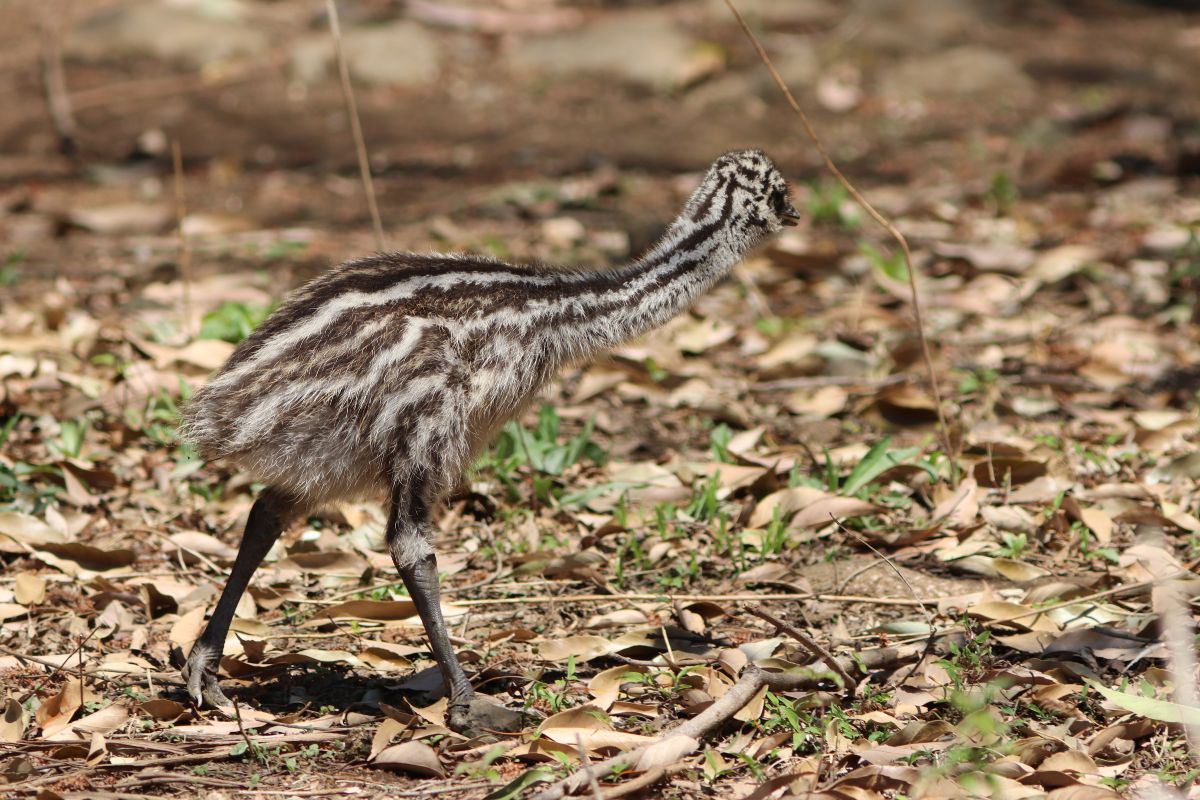
Baby emus can feed themselves a couple of days after hatching. They learn a lot by trial and error but more via imitation. The emu chicks follow their dad throughout the day, watching what he eats and avoids. If the dad pecks at something, the chicks consider that item safe to eat.
The baby emu diet comprises small and large insects, including caterpillars, crickets, moth larvae, ants, and grasshoppers. The chicks also eat seeds, fruits, berries, grass, flowers, and other easily accessible and safe-to-eat plants in their surroundings.
Typically, emus thrive in secluded areas of the forest or arid land throughout Australia. They mainly prefer to live in savanna woodlands, grasslands, or Sclerophyll forests.
Because they are considered an endangered species, there is a high number of emus in zoos and protected farms. Here, baby emus feed on industrial bird feed. Young chicks get industrial starter feed with 20% protein.
When the baby emus grow from two months to 24 months, they get maintenance bird feed with all the nutrients to keep them healthy. Beyond 25 months, emus get the standard bird feed with 16% protein. Once in a while, their diet is supplemented with mealworms, leafy greens, and fruits.
Are Baby Emus Friendly?
Baby emus are more friendly and curious. They don’t mind being around humans, let alone other animals. They’ve barely developed a sense of fear and depend entirely on their dad for protection.
Adult emus rarely attack humans unprovoked. However, if provoked, they can cause severe injuries to anyone they consider a threat. Remember that a mature emu is a heavy bird with three huge toes with claws, their best weapon.
Can You Keep a Baby Emu as a Pet?
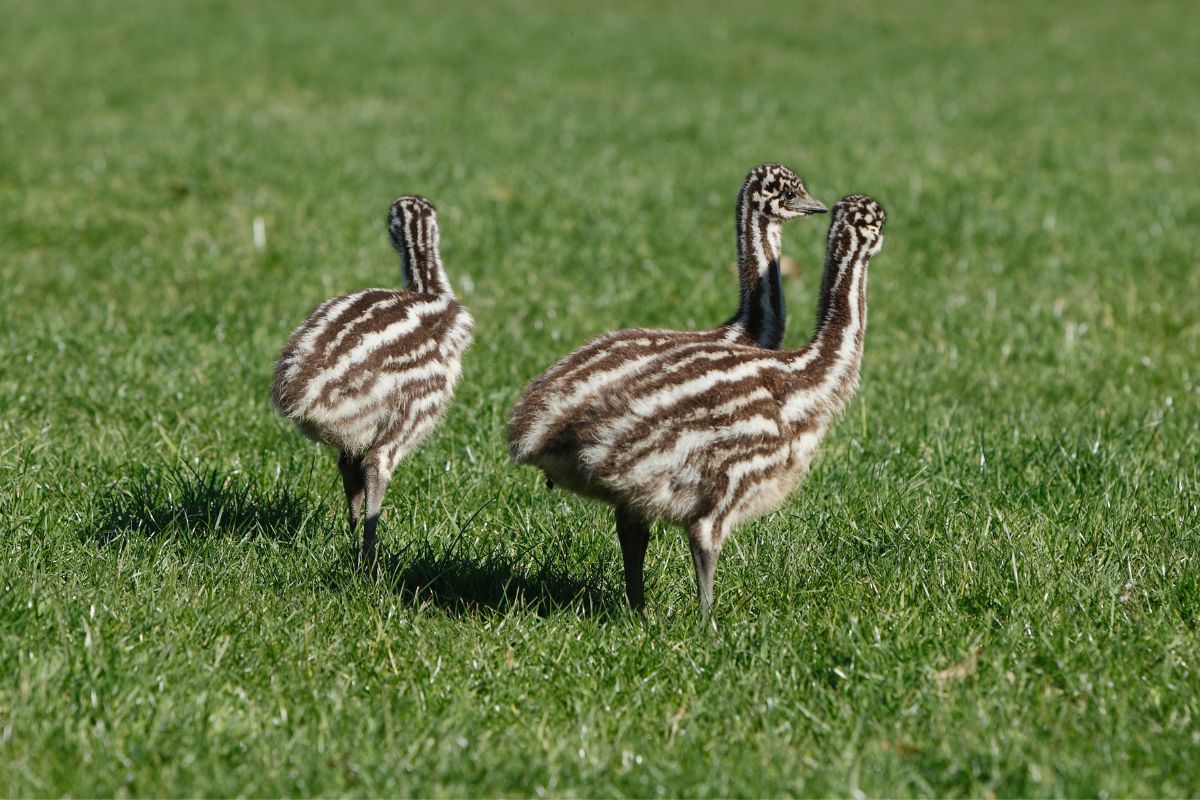
Australia aims to see an increase in the emu population. While strict rules protect the well-being of all wild animals, including birds, you can keep an emu as a pet. This provided that you could meet all the set wildlife requirements and standards.
If you keep a baby emu as a pet, it will get used to being around you. They will follow you around everywhere. Your pet emu juvenile will not attack you when you touch them because they already consider you one of its own.
Unlike an emu bird raised in the wild, your pet emu is used to seeing you and having you touch them. Therefore, they will not negatively react adversely to being around humans. However, it is up to you to practice good judgment and caution, especially when your pet emu seems moody and irritable.
Caring for a Pet Baby Emu
emu chicks have a great sense of independence. However, to increase their chances of survival, a baby emu needs close care and observation for the first four to six months. Emus rarely get sick and have a strong immune system that can tough out many conditions that other birds wouldn’t. The bird will be ready to fend for themselves when they reach six months.
Make sure the pet baby emu eats a healthy diet, has access to veterinary care whenever necessary, and has plenty of space to explore.
Supplement your pet emu’s diet by feeding them with spinach, kale, and other types of fresh greens. Greens and vegetables are important for emus because they harbor plenty of vitamins. Emu chicks are prone to vitamin deficiencies that may cause frequent illness and limit their lifespan.
Additional Emu Facts
To understand everything about baby emus, you must first understand how they got here in the first place. Here are key facts you should know about emu Reproduction.
Emu Reproduction
emus beyond two years old may look like adults, but they won’t be ready to lay eggs or mate until they are three years old.
Mature emus couple up during the hotter summer months from December to January and start mating during the cooler months between May and June.
Male emus are super responsible parents. Their instinct to take over parenting tasks such as incubating and raising the chicks happens due to hormonal changes.
Owing to these changes, the male emu instinctively builds a nest using tree bark, grass, and leaves. Their appetite becomes so suppressed that they don’t feel as hungry as they normally would outside the mating and incubating season.
What Does an Emu Egg Look Like?
An emu egg has a distinct emerald green shade and has many white glittery spots that make the eggs look like they’re from some alien, as depicted in the movies.
An emu egg measures 130 mm by 90 mm and weighs between 450 g and 650 g. The egg incubates for 54 to 56 days before hatching. The male emu responsible for incubating the eggs barely leaves the nest for the entire duration.
Considering they cannot leave the nest to look for food as often as they’d like, they lose about a third of their original weight by the time the incubation period is over.
How Many Eggs Can an Emu Lay Per Mating Season?
There are recorded cases of a female emu laying up to 20 and 24 eggs per clutch. However, a female emu normally lays between eight and ten eggs per clutch. Of all eggs laid, some fail to hatch, while wild animals eat others.
Other factors contributing to the decrease in the number of eggs that hatch successfully include harsh weather, sabotage by other emus, and abandonment by the father charged with incubating the eggs.
Final Say
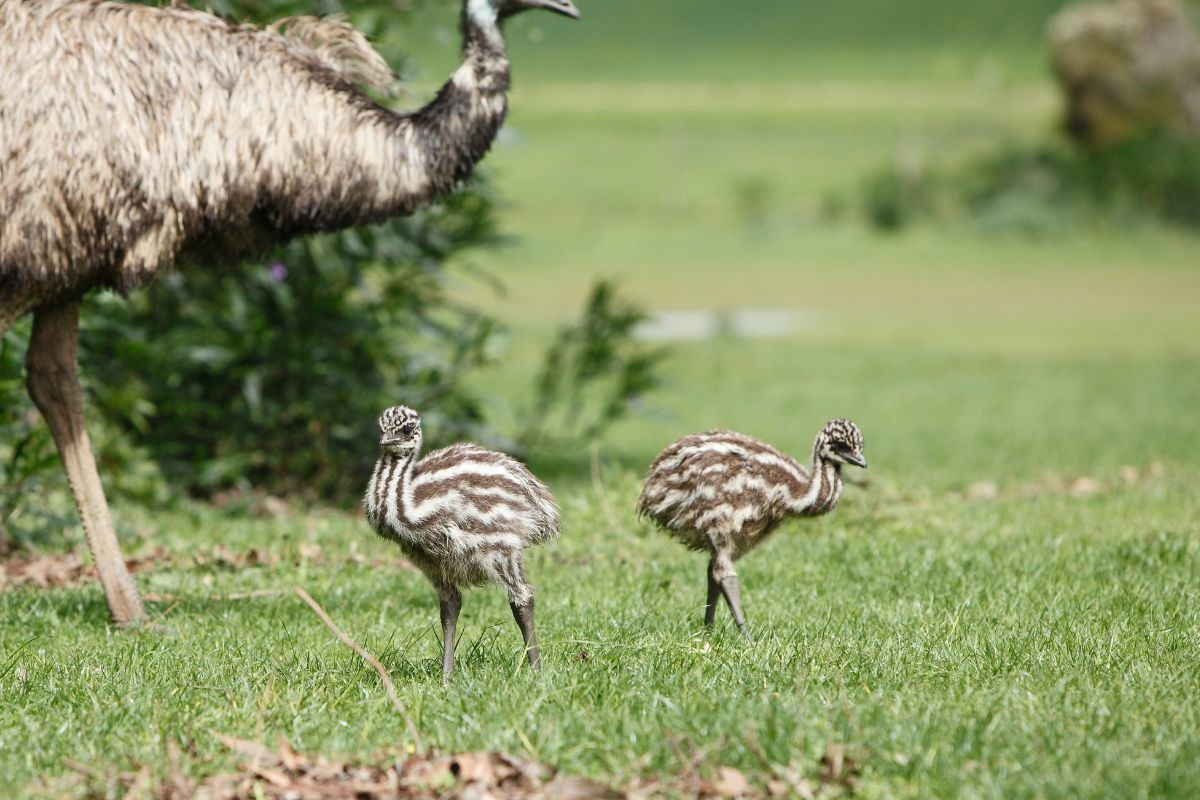
Adult emus may be massive and intimidating, but they are the most affectionate and gentle. Baby emus are even more adorable and quite pleasant to look at.
Whether you are looking to keep a baby emu as a pet or are curious about the awkward-looking bird, above is everything you need to know about the baby emu.
